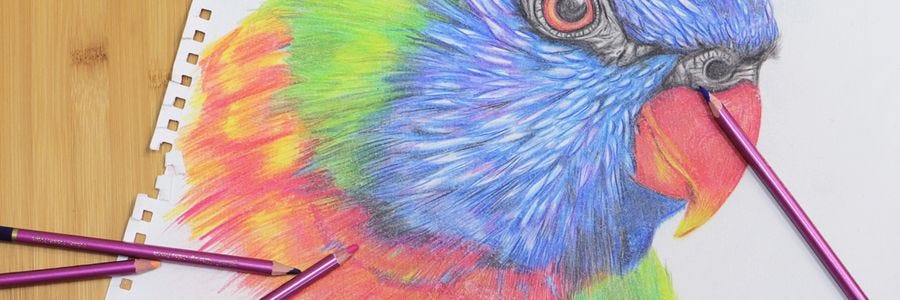Sometimes choosing a surface for your artwork isn’t as straightforward as you expect it to be. If you’re stuck at square one, we’ve put together a list of common surfaces to help you decide which one is best for your project.
Stretched cotton canvas

Let’s start with one of the most common painting surfaces around. Stretched canvas comes in many shapes and sizes and is perfect for both acrylic and oil painting. The woven pattern of the cotton is a drawcard for a lot of artists, particularly when they want to create textured artworks. It’s also a big plus that stretched canvases are often already primed and ready to paint when you buy them.
Stretched linen canvas

Linen canvases have a finer texture than cotton and are slightly heavier. Since oil paints won’t soak into linen, this type of canvas is a good choice for artists working in this medium. Like its cotton equivalent, stretched linen canvases usually come primed and ready to paint.
Canvas panel

If you’re looking for an affordable surface that you can practice your painting on, canvas panels are a great option. They don’t quite offer enough support for a finished artwork, but we’ve found them essential for testing and experimenting before getting started on the final piece.
Wooden painting board

Wooden painting boards are a solid choice if you need a smooth surface for your acrylic or oil painting. They’re essentially a ply panel attached to a frame which makes them sturdy and warp resistant. This strength makes them perfect for painting outdoors or using large amounts of paint for fluid art.
Composite panel

Did you know that you can use wooden panels from your local hardware store for acrylic and oil painting? Some common panels include Masonite, MDF and Marine plywood. These are great because you can cut them to your preferred dimensions, but they do take some prep work. Composite panels aren’t made to be painting surfaces, so you’ll need to prepare the surface with gesso or canvas to stop the wood from absorbing paint.
Copy paper

Copy paper is usually about 80gsm (grams per square meter) and has a very fine tooth. To break that down - the lower the gsm, the lighter the paper and the finer the tooth, the smoother it is. The smooth surface of copy paper means it’s only really suitable for graphite pencils and wax-based colour pencils. While it’s not a high quality paper, it is affordable and easy to find which makes it perfect for kids to use.
Watercolour paper

Watercolour paper is the most versatile all-rounder there is. In fact, with the exception of oil paint, every medium can be used with this type of paper. It’s available with a smooth, medium or rough surface and comes in a range of weights (from 185-600gsm). If watercolour paper is framed properly behind glass it can last for hundreds of years!
Kraft paper

Kraft paper is an earthy brown colour and works well with a range of mediums including charcoal, pencils, ink, pens and pastels. The colour of the paper is a great mid-tone which means you can create highlights using white charcoal. The rough texture also creates beautiful effects with pastels and other dry media.
Butchers paper

Need an affordable option for the kids? Butchers paper is generally around 50gsm and has a smooth surface that’s great for pencils. It also comes in handy for life drawing because the smooth surface allows you to create subtle tonal transitions and smudging with charcoal pencils and blocks. Just remember that this type of paper is often not acid-free, so it will become discoloured and brittle over time.
100gsm paper

For more versatility, choose a thicker paper such as 100gsm or above. You can use a range of media with this paper including pencils, ink, acrylic paint and gouache paint.
Now that you’ve had a run-down of some of the most common artwork surfaces, it’s time to start creating! There are plenty of options out there, so don't be afraid to experiment with other surfaces too (even those outside of the norm). We'd love to see what you create, so feel free to tag us using @montmarteart on Facebook or Instagram.





























